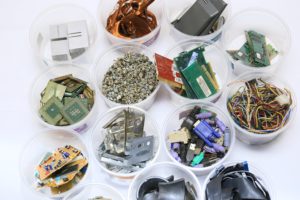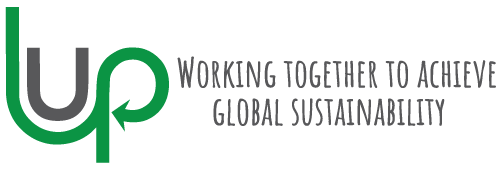An interview with our guest experts Leanne Wiseman and John Gertsakis
We are pleased to feature a guest interview with Leanne Wiseman (Professor of Law at Griffith University), and John Gertsakis, Co-founder of the E-waste Watch Institute and a Director of the Product Stewardship Centre of Excellence. Leanne and John have recently published an article about the Right to Repair, and we wanted to know more about it and the current situation in Australia.
LUP: Hi Leanne and John, thanks so much for your time, it is a pleasure to have you here in this discussion. You have been working for a long time in sustainability, and recently published an article about the Right to Repair… Why is this so important?
Leanne: In many ways ‘repair’ is a first responder to the waste challenges that confront society today, and consumers are increasingly wanting to have some control over their goods and efforts to prolong their life, value and functionality … a key principle of the circular economy. If Australia is serious about waste avoidance and the practical implementation of circular economy principles, we need to move up the waste management hierarchy with genuine conviction and authenticity of action.
Of course, we need to recycle more, we need cleaner streams of recovered materials and we need resilient end-markets for the secondary materials, but we urgently need heavy-lifting on product durability, repairability and re-usability. In simple terms, the value and role of durability, repair and reuse in several product categories needs to be elevated, enabled and supported in order to create more circular patterns of production and consumption.

LUP: What are the main challenges/obstacles for the implementation of this model, and how can we overcome them?
John: There are currently many barriers that contribute to the inability of consumer to repair their goods, including the physical design of the products, the intellectual property rights of the manufacturers and the licences that govern the use of the goods and the lack of access to spare parts and repair or service information. There is also the fear that increased independent repair activity would undermine manufacturers’ control of their lucrative repair and service aftermarkets. Those manufacturers and companies opposing the Right to Repair, cite safety, security and privacy concerns as the reasons for their opposition to the Right to Repair movement.
While other countries have implemented tax incentives to encourage repair or require the labelling of consumer appliances to present a durability index of performance and repairability, Australia can do much more to create positive and desirable interventions to facilitate repairability of products. The appetite for widespread repair action and more durable products is growing but we also need to get serious about developing appropriate legal and policy levers that will encourage and enable repair as well as finding appropriate funding sources that support and reward activity at the top of the waste hierarchy, be it through design for durability, repair, reuse or different consumption models.
The momentum behind a right to repair is growing in Australia and the opportunity to turbocharge its potential and application is now. Most importantly, we need to focus on the opportunities to build a culture of repair that meets consumer expectations, protects industry’s IP and maximises the social and environmental benefits. This includes recognising and creating the right regulatory and policy settings that encourage increased repair activity. It is also important to inform policy development with consumers’ experiences of repair, whether that be the inability to access repair or service information or to choose third parties to conduct their repairs. We also need to see greater acknowledgement of how repair can avoid and reduce waste associated with electrical and electronic products at scale and nationwide. This necessarily requires collaboration, government investment, business commitment and consumer participation.
LUP: How do you see the current situation in Australia, and the near future?

Leanne: Australia is at the front-end of history when it comes ‘waste’ policy reforms and how we transform the numerous suite of actions that seek to meet the ambitious targets in the National Waste Policy Action Plan. Durability, repairability and re-usability are more than ‘nice to have’ type measures; they represent a potent set of strategies that are increasingly being demanded by consumers and the general public.
Fortuitously, the Review of the Product Stewardship Act recommendations clearly identified the need to “broaden the objects of the Act to include product design improvements related to durability, reparability, re-usability and recyclability.” The Government supports this recommendation, and it reflects smarter thinking about developing product stewardship schemes that address the full product life cycle.
While Australia does not have a “Right to Repair” legislation, the Australian Government has asked the Productivity Commission to inquire into whether Australian consumers need a ‘Right to Repair’ their consumer electronics and other manufactured durables. The Productivity Commission’s Issues Paper released on December 7 2020, highlighted the focus of their inquiry: whether Australian consumers have the ability to repair faulty goods and to access repair services at a competitive price? The Productivity Commission has received over 140 submissions in response to the Right to Repair issues paper from diverse groups, associations, companies and individuals, and a draft report is due in June 2021. These submissions can be viewed and downloaded here.

This Right to Repair inquiry provides a timely opportunity for individuals, brands, retailers, manufacturers and NGOs to share their views, experiences and constructive solutions as a contribution to maximising safe and cost effective repair action in Australia. The time is Right to Repair but it requires policy responses and programs that acknowledge the barriers and opportunities of repair to make it work as a waste avoidance and reduction strategy. And we mustn’t overlook the social and cultural dimension. Repair, be it DIY at repair cafes, or through independent repair businesses or manufacturers, is just as much about empowering consumers to take control of the products they purchase and own, as it is about waste reduction and sustainable materials consumption.
LUP: John, as Director and Co-founder of the E-waste Watch Institute, what actions are you seeing in the case for higher value capital equipment such as laboratory or manufacturing equipment -main focus of LUP´s business model-?
John: Prolonging the life, value and functionality of all manufactured durables should be a high priority if we are genuine about making circularity a reality. Higher value capital equipment, including scientific and medical devices, represent a class of products where durability, reparability and remarketing can be a template for other categories of equipment. But we need to tell the story with authenticity so that consumers and the market more generally can understand the benefits of product life extension and reuse. Whether it is household consumers of whitegoods and consumer electronics, or commercial and industrial buyers of electrical and electronic equipment, service providers can do much more to inform and engage potential customers and product users.
A business model that can educate and empower the market to embrace product reuse, remarketing, and preventative maintenance programs, is a business model that goes beyond recycling and is therefore geared towards waste avoidance and direct customer benefit rather than ameliorative and incremental solutions.
LUP: Thank-you so much for your time today Leanne and John, and for your wonderful insights into this important topic on Repair in Australia. We look forward to keeping in touch and continuing to follow the important work you are both doing in this area.
To learn more about the Product Stewardship Centre of Excellence: https://stewardshipexcellence.com.au/
and the eWaste Watch Institute: https://ewastewatch.com.au/
THANKS!



